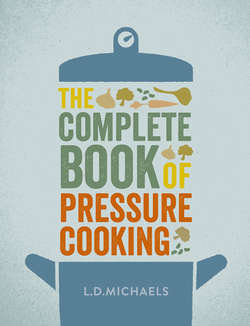Читать книгу The Complete Book of Pressure Cooking - L.D. Michaels - Страница 38
Vegetable Stock
Оглавление10 minutes
vegetable scraps – almost anything, especially potato peelings, lettuce, cabbage and cauliflower outer leaves, celery, roots (but go easy on strong tasters like turnip), carrots (for sweetness), onion, broccoli tops, limp “old” vegetables, etc.
salt and pepper
bouquet garni
1 Fill cooker base with vegetable scraps, season and add bouquet garni. Pour in water up to halfway mark. Use a greater proportion of water to solids if your vegetables are dryish – either a bit old or mostly root. Bring to boil. Cover, pressure cook for 10 minutes. Cool at room temperature to reduce pressure. Remove bouquet garni.
2 For a thick soup, mash the remaining solids or put in a blender. For a clearer stock, strain.
3 All vegetable stocks should be carefully tasted at the end of cooking time. Adjust seasoning. Add finely chopped fresh herbs like parsley, sage and chervil as the liquid cools. Occasionally, one vegetable can become overpowering, particularly when the cooking time has been long. You’ll soon develop a sense of what to avoid.
4 This stock will keep about 24 hours. On reuse, adjust seasoning. Adding soy sauce or miso (fermented soya paste, from health-food and Asian shops and suppliers) will give a meatier taste. Adding sesame oil will give a nutty taste. These additions are made right at the end of the cooking process – thus, if you are using the vegetable stock as the basis of a vegetable soup, you would cook your vegetable scraps in the vegetable stock for the appropriate period, depressurize, open up the lid and add the seasonings as the soup cools down and just before serving. (N.B. If you try miso, you will need less salt, as the paste is already very salty.) You can add grated cheese at the end of the cooking period as well.
